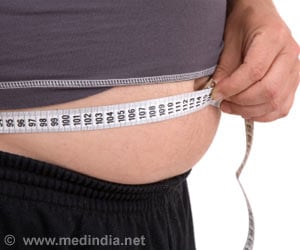Urbanization including handheld tech devices, and food deliveries associated with obesity in the Indian population.

Obesity in India
"Major drivers of obesity in India are a sedentary lifestyle, westernization of diet (including junk and fast food), increased screen time and lack of exercise. Little physical activity is required to earn a living now, and access to food has increased manifold," Dr. Vivek Bindal Director & Head - Institute of Minimal Access, Bariatric & Robotic Surgery, Max Super Speciality Hospital, Vaishali, told IANS."Packed food like bags of chips and cookies are available in remote villages and to poor socio-economic strata as well at very low cost, thus increasing its consumption across all sections of society. Access to smartphones and data has increased screen time significantly, reducing physical activity," he added.Among urban areas like Delhi and Chandigarh, obesity prevalence is around 30 percent, but the most alarming statistic is that over one-third of school-going children are overweight or obese, as per NFHS data.‘About 20% of the population in India is obese including 5% of severely obese population. #obesity #obesityinindia #worldobesityday’





The World Obesity Federation in a 2023 report predicted that in the next 12 years, more than 51 percent of the world's population will be overweight or obese (1✔ ✔Trusted SourceEconomic impact of overweight and obesity to surpass $4 trillion by 2035
Go to source). According to a national study, about 14.4 million obese children are in India, and it has the second-highest number of obese children in the world, next to China.In addition, obese children are also more likely to suffer from low self-esteem, and weight bias both in school and family settings."When we come to look into the reasons leading to being overweight then on top of the list is inadequate activity means a sedentary lifestyle in comparison with the increase in high carbohydrate-rich food."
Moreover, Dr. Durkhure mentioned that obesity is an illness which affects the physical and mental health of an individual, plus depression and anti-social behavior is commonly seen with the rising weight of a person.Nowadays, infertility both in men and women is seen commonly and more with obese persons. Polycystic ovarian disease (PCOD) is seen in obese teenage girls, thus leading to infertility in their later life.
According to the latest survey, about 6.4 percent of women and 4.0 percent of men aged 15-49 are actually obese, and around 17.6 percent of women and 18.9 percent of men in the same age group are overweight (2✔ ✔Trusted Source
Forecasting the prevalence of overweight and obesity in India to 2040
Go to source), but they are labelled as obese.To combat obesity, experts believe that prevention is the best strategy and that it should be implemented at a young age.
Obesity Management
Obesity can be tackled by reducing screen time, junk/fast food consumption, and encouraging exercise, sports, and yoga. Proteins such as whole legumes, egg whites, and lean fish and chicken should be included in meals, plus metabolic-boosting foods such as ginger, lime, garlic, and salad, as well as fruits and dry fruits, should be included in a family's food plate.References:
- Economic impact of overweight and obesity to surpass $4 trillion by 2035 - (https://www.worldobesity.org/news/economic-impact-of-overweight-and-obesity-to-surpass-4-trillion-by-2035)
- Forecasting the prevalence of overweight and obesity in India to 2040 - (https://www.ncbi.nlm.nih.gov/pmc/articles/PMC7039458/)
Source-IANS











